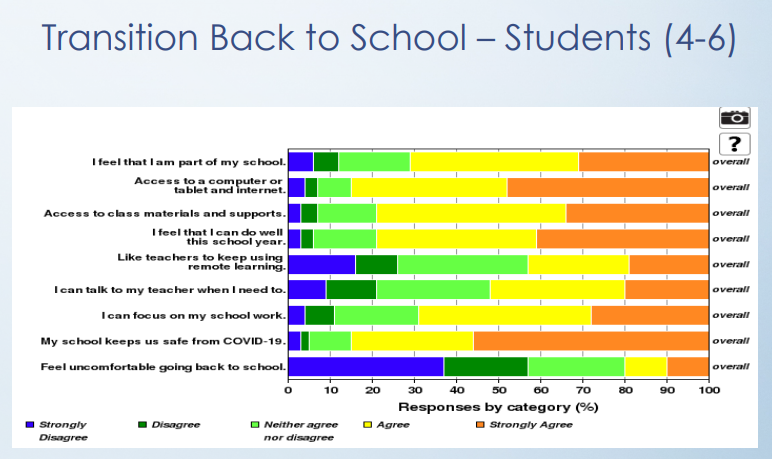EAST CENTRAL — About five per cent of students in the North East School Division (NESD) between Grades 7 to 12 strongly disagree that they have access to technology for remote learning, according to a survey of students.
This remains consistent with levels of Grades 4 to 6, who stated they strongly disagree that they have access to a computer, internet or tablet.
These numbers come from the NESD’s “transition back to school survey,” which had students asked about whether they feel connected to their school community, their thoughts on the effectiveness of remote learning, strategies in their school, and whether there are any learning gaps as a result of COVID-19.
The survey looked at technology access, connectedness to school community, access to class materials and supports, school work focus, spread of COVID-19 within the schools, access to teachers, preparedness for success, remote learnings use, and comfort levels.
“I think for the most part, it is quite good,” said Marla Walton, NESD board chair. “There would be some areas up in the north east who do not have the optimal level of technology, but that is something that school boards do continue to lobby the government for best access to technology.”
Walton said for students that don’t have access to equipment, she suggested they go to their local public library, get hard copy materials, or the school will supply them with laptops they can use.
“This is something we did do last year when schools closed, for students who didn’t have access to internet we provided them with hard copy paper materials so that they could keep up with their studies,” she said.
“We also do make Chromebooks or laptops available to the students if needed.”
Walton said the plan for next year is to have the students back in class with a “relatively normal setting.”
“As far as the students returning in the fall, we’re hoping that all of the students do return to an in class environment and if some of the students if they maybe have to stay home for a few days they can access remote learning protocols.”
An additional survey for Grades 7 to 12 looked at the impact of COVID-19 on students’ mental health.
Students were asked to indicate on a scale of zero to 10, where zero means “not impacted” and ten means “very impacted”, how COVID-19 has affected their mental health. Results were reported as the percentage of students who selected each category.
Twenty-two per cent of students chose zero, seven per cent of the students chose 1, seven per cent chose 2, six per cent chose 3, seven per cent chose 4, 11 per cent chose 5, six per cent chose 6, eight per cent chose 7, eight per cent chose 8, five per cent chose 9, and 14 per cent of the students chose 10.
Walton said the division would always like to see students have a healthy level of mental health, but some impact is unavoidable.
“COVID-19 has definitely impacted the vast majority of people, I think it would be safe to make that assumption,” she said.
“There are a number of things that take place, some of them are built right into some of the curriculum for the students. It’s something that’s definitely on the forefront of everyone’s mind right across Saskatchewan, particularly in education.”



